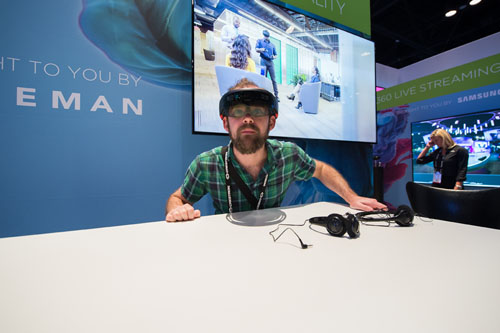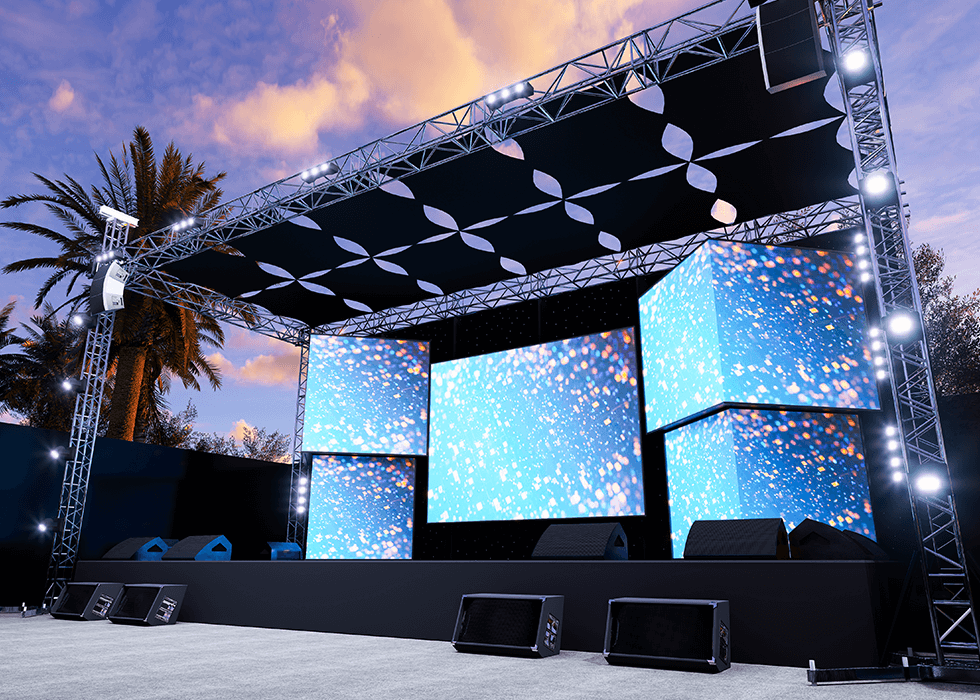Adoption and Awareness Among Consumers Enables Greater Business Use of Visualization Technologies
By Tim Kridel, Special to AVIXA
 In the first quarter of 2017, 2.3 million AR and VR headsets shipped worldwide, according to the International Data Corporation (IDC) Worldwide Quarterly Augmented and Virtual Reality Headset Tracker.
In the first quarter of 2017, 2.3 million AR and VR headsets shipped worldwide, according to the International Data Corporation (IDC) Worldwide Quarterly Augmented and Virtual Reality Headset Tracker.
More than 98 percent of headsets shipped in Q1 2017 were VR devices, such as Samsung's Gear VR, Google's Daydream View and Oculus Rift, IDC says. That’s because VR is a more mature technology than AR. “It's very early days in terms of AR headsets, with the vast majority of products shipping into the market focused on getting hardware into the hands of developers," says Tom Mainelli, IDC Vice President of Devices and AR/VR. "Meanwhile, we expect most consumers to experience their first taste of augmented reality through the cameras and screens of their existing mobile devices such as smartphones and tablets."
Consumer and large organization interest and adoption of visualization technologies is important for the following reasons:
- Consumer experiences frequently influence people’s expectations about what’s possible and preferable at work. In fact, one reason why so many enterprises now have desktop and mobile video collaboration solutions is because their employees use FaceTime and other video chat applications with friends and family. The more those employees use VR at home for, say, gaming or exploring museum galleries, the more they see value in having those capabilities at work.
- Personal use teaches people how AR and VR work, so their workplace applications have less of a learning curve. As a result, their employers don’t have to spend money, and lose productivity, getting them up to speed on the basics. In that respect, AR and VR are like smartphones, where employers need to provide training only for work apps because most employees already understand how to use the device. This benefit isn’t limited to AR and VR, either. For example, other types of visualization systems can leverage employees’ personal usage of gesture-controlled entertainment products, such as Nintendo Wii or Microsoft Kinect.
- As AR and VR adoption grows, businesses have less need to provide those devices to customers and/or employees because they already own them. There are parallels with smartphones here, too. Businesses don’t have the expense of buying or loaning customers a smartphone to use their app, because most people already own one. Many organizations also have bring-your-own-device (BYOD) policies to encourage employees to use their personal smartphone for work. It’s not a stretch to envision some employers extending their BYOD policies to AR and VR devices to avoid the expense of buying those, too. In fact, many businesses use BYOD to achieve productivity benefits they otherwise wouldn’t get if they first had to provide each employee with a smartphone. The same strategy could apply to AR and VR applications that they couldn’t afford to implement if they had to buy headsets and other devices.
- Consumer adoption drives volumes, which in turn drives down cost. For example, headsets become cheaper as they become mass-market products. In the process, sales of content-creation software and other development tools increase as more businesses cater to that installed base of headsets, driving down the cost of those tools.
IKEA is a household-name example of how some businesses have begun leveraging these technologies. The company is set to launch an AR app, developed with Apple, to help people make "reliable buying decisions" about big-ticket items, according to IKEA. The AR app helps people literally see how something will look in their home before they purchase it. Whether it involves a robot or a recliner, AR helps businesses minimize expenses related to buyer’s remorse, such as processing and discounting returned items, and staffing up contact centers to field customer inquiries about return policies.
As visualization technology use, especially VR and AR, continues to increase among consumers and consumer brands, more businesses and organizations across all verticals will be able to take advantage of the bottom-line benefits and innovative uses of visualization.





